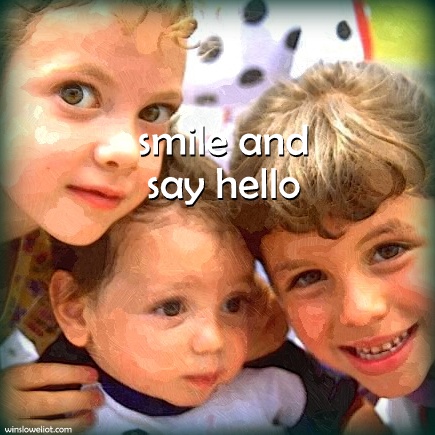
Stillness 7-9: Recently, I’ve begun referring to myself by my childhood nickname, which was Wyddy when I was very young and Wyd when I grew older. The serious-sounding “Winslow” was what adults called me when I was grown-up and especially when I became an author. Not surprisingly, hearing myself called by my childhood name has brought up some complicated feelings.
So I decided to talk with greater attention to the “Wyddy” who’s been living inside me all these years but who I’ve ignored way too much. It’s been many years since I first learned about the importance of connecting with our “inner child.” Although I’ve understood the term intellectually, it’s only recently that I’ve begun to understand its vital importance. Because this I do know: If we don’t create a strong and loving relationship with our inner child, we are doomed to experience insecurities, tantrums, frustrations, helplessness, and depression.
In a nutshell, talking to our inner child is a lot like talking to our feelings—giving them comfort, a sympathetic ear, a supportive reassurance. Our inner adult must learn to reassure our inner child that we can take care of any responsibilities that would otherwise seem overwhelming to them. The child within us reminds us of our cheerfulness, spontaneity, and joy—but only if they are allowed to be heard, only if they are reassured, listened to, and valued.
So how can we create a vibrant relationship between our inner child and our inner grownup? There are many ways of connecting. I’m particularly drawn to this popular method of writing a dialog between them: Give each of them separate names and write those names at the top of two separate colums. (I named one “Wyddy” and the other “Winslow.”) With your dominant hand write a question or statement from your adult self. With your non-dominant hand respond to it in the other column. Don’t worry if the writing is illegible—closing your eyes to do this is the best way. What happens when we write with our non-dominant hand is that feelings and memories often surface directly from our unconscious—from before we learned how to write. The dialog that occurs can be surprising and often fascinating.
But even without doing this writing exercise, you can still simply grow continually more aware of your inner child. First thing in the morning, if you wake up feeling anxious or sad, ask your inner child how they’re doing. Listen closely. Acknowledge their worries or anxieties—don’t tell them to grow up or stop feeling anxious or that they’re silly to feel that way. Instead, tell them you are hearing their concern, and they do not have to be anxious about it because you, the adult, will take care of the problem. Remind them that it’s not their responsibility and that they can trust you to manage (even if you don’t think you can at the moment!). Your inner child needs your support. Smile and say hello to them as often as you can.
When we begin to constantly become aware of the inner child inside us, and acknowledge them with a smile or wave or a hug first thing in the morning, throughout the day, and last thing at night, we find a profound integration occurring throughout our entire being. When that happens our greater awareness of our own “I am” finds serenity and confidence simply in being alive.
